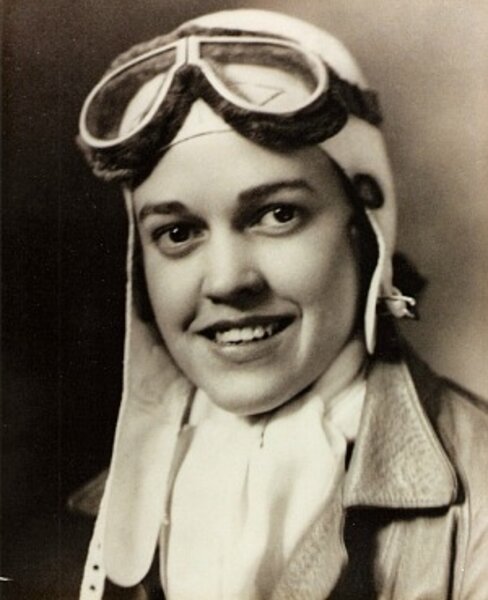Why wing walkers and stunt pilots inspire us
Loading...
I thought of my parents when I heard the news about the wing walker and stunt pilot killed in a crash Saturday at the Vectren Air Show in Dayton, Ohio.
They flew a Waco 9 open-cockpit biplane out of farmers’ fields in Wisconsin in the 1930s, sometimes giving rides to the usually-earthbound.
They weren’t stunt pilots or wing walkers by any means, although my father did tell a story about having to crawl out on the wing in flight to dislodge a chicken stuck on the landing gear during takeoff.
But in the old, black-and-white photos I have, they do look a lot like Amelia Earhart and Charles Lindbergh. I have my father’s soft leather helmet, although the fur-lined goggles were lost in some move.
(In another story, my father told of meeting Ms. Earhart once – literally running into her as a teenager as he dashed around a corner at a model aircraft show where she was the featured attraction.)
Such flying back during the Great Depression helped lift spirits. For a few dollars – an enormous sum to spend on entertainment in those days – a farmer or his kids could spend a few minutes seeing their countryside from the air. For many, it was likely the only time they ever flew in an airplane.
For my parents, their piloting days ended when the friend who owned the Waco 9 crashed into a lake with a student and was killed. But those days always seemed to indicate something about their character and sense of adventure. It may have influenced me to become a US Navy aircraft carrier pilot between college and a career in journalism.
Anyone who’s done much flying at the controls of an aircraft is familiar with John Gillespie Magee’s line about having “slipped the surly bonds of Earth” from his poem “High Flight.” (Magee was a 19 year-old American flying Spitfires with the Royal Canadian Air Force when he was killed in a training accident four days after Pearl Harbor.)
On her website, stuntwoman Jane Wicker, killed Saturday along with pilot Charlie Schwenker, explained what she loved most about her job, reports the Associated Press.
"There is nothing that feels more exhilarating or freer to me than the wind and sky rushing by me as the earth rolls around my head," she wrote. "I'm alive up there. To soar like a bird and touch the sky puts me in a place where I feel I totally belong. It's the only thing I've done that I've never questioned, never hesitated about and always felt was my destiny."
Teresa Stokes, of Houston, who’s been wing walking for 25 years and does a couple of dozen shows every year, told the AP her job mostly requires being in shape to climb around the plane while battling winds.
"It's like running a marathon in a hurricane," said Ms. Stokes, who did a show in Minnesota last week and will head out for another one in Montana next week. "When you're watching from the ground it looks pretty graceful, but up there, it's happening very fast and it's high energy and I'm really moving fast against hurricane-force winds."
That’s very different from flying lazy turns around farmer’s fields or dropping down to navigate by water tanks painted with town names like Eland, Wisc. (population 400) where my mother was born four months before the RMS Titanic went down. But it comes from the same impulse.
My father has been gone for several years now, and my mother passed on recently at 101 – sharp and lovely as ever, still exhibiting some of that spirit that made her want to take to the skies over Wisconsin.








